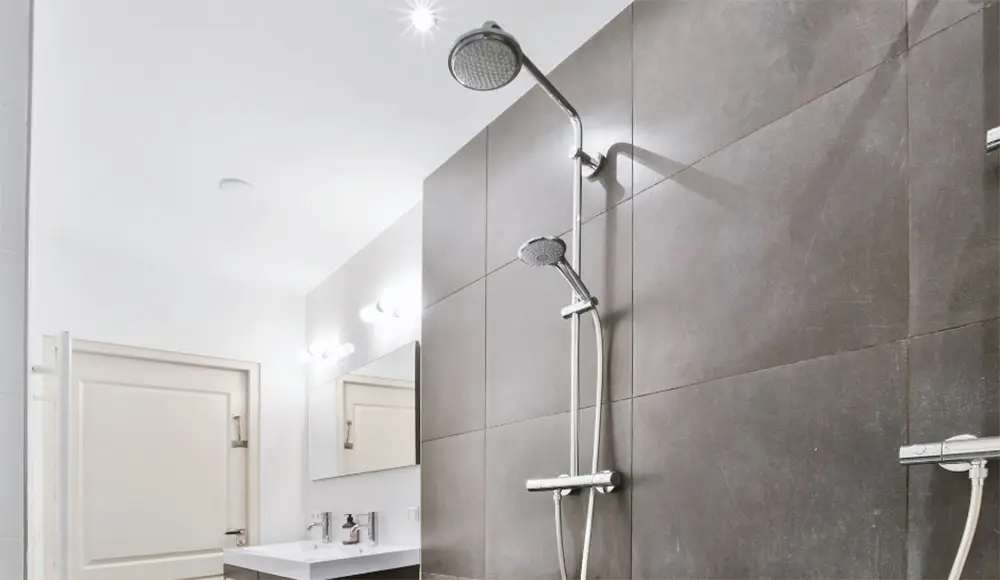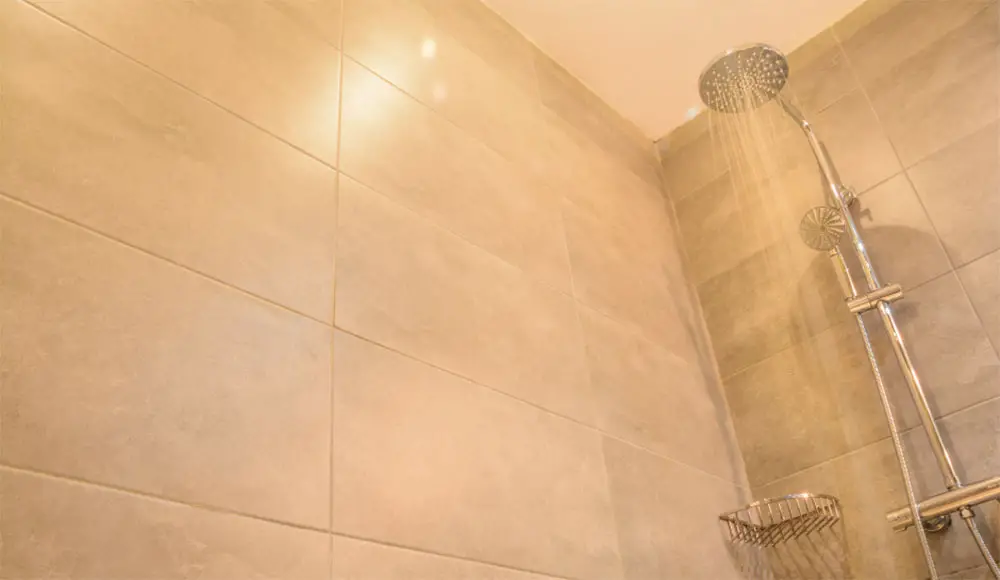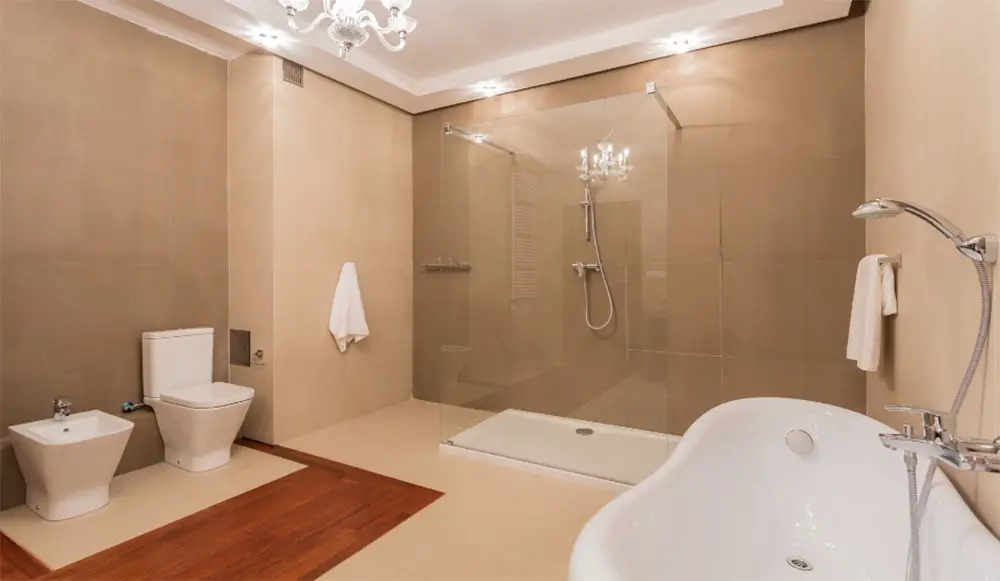Hey! This site is reader-supported and we earn commissions if you purchase products from retailers after clicking on a link from our site.
Replacing or renovating a shower area can be time consuming, costly and hard work. Not to mention the mess. There is no easy or fast way to place and grout tiles onto a wall.
The same can be said for acrylic tiles. With so many similar options available on the market, it is time to open the door to something new. What if there was an easier, attractive alternative to traditional shower wall material?
Queue Utile
Utile is an award-winning shower wall material created by the company, MAAX. It is made to replace the more traditional ceramic tile and grout option that litters bathrooms across the world. It is a good stand in for other plastic alternatives.
Utile has the added advantage of being grout-free, mess free, quick, and easy to install and, there are a variety of designs and trims to choose from. In this article, we will explore what Utile is, how it works and what the different options are for your shower area.

The Products
Utile comes in a range of patterns and designs. Its overall purpose is to slot easily into a shower area. Utile caters for alcove showers, corner showers, and bath tub shower units. You can buy single walls, or a set of walls to fit into a designated area.
It can’t be cut down to size around instead, it comes ready-made and ready to go.
Three Piece Tub Wall Kit
The Utile three-piece tub wall kit consists of a three wall package. This particular product is designed for showers that sit over the bathtub.
There are two side walls and one back wall. These come together to create a Utile shower area for a tub shower. This option is not available in all designs, only a select few. However, there is still a range to choose from that would look great in a bathroom.
Side Wall Kit
Side walls can be combined with a back wall to cover a corner shower area or an alcove shower. They are a shorter length than the back wall option.
Back Wall
The back wall is much the same as the side wall, just with varying dimensions.
Fully Assembled
There is also an option to purchase assembled Utile kits. These come ready made and handily configured to your desired shower area. They come in all the different sizes and shapes listed above (alcove, corner, bath tub) and, in a range of designs also.
Pros and Cons
Pros
- Easy installation: All Utile products are installed direct-to-stud. Direct-to-stud just means the Utile can’t be placed onto the drywall. If you want the Utile to be installed in an area that already has drywall, this will need to be removed. This means they are drilled into the base wall, not onto the plasterboard. Two people installing Utile can complete the task rapidly.
- Easy upkeep: Utile is easy to clean and there is no high maintenance upkeep. Use a soft, preferably cream based cleaning solution and warm water.
- Durable: Utile is built for durability. It is a strong, polymer material that is stain and damage resistant. As long as proper installation happens, the Utile product should last for decades. The products even come with a warranty guarantee for extra assurance.
- Completely waterproof: Utile is completely waterproof. Consumers report absolutely no leakage even after years of installation have passed. The design won’t fade or become damaged easily.
- Range of designs: There are a number of different designs to choose from. These include marble, brickwork, and plain walls. Lots of different patterns are available which means Utile can match the decor of lots of different bathroom ideas.
Cons
- Cannot be cut: Utile shower panels come as a ‘set dimension’ system. They cannot be cut to mold around bathroom features and, instead are built for a specific shower configuration. There are multiple options to help you decide which is best for your shower area.
Buyer’s Guide

Types Of Shower Wall
There are a few common types of shower wall material. We will take a look at the most popular two and how they compare to Utile.
PVC
PVC is the cheapest option for creating a shower wall. It is lightweight and can be cut to shape to fit around bathroom features. It costs less per unit and comes in a vast array of different designs and colors.
Though it may be cost-effective, PVC is not as durable as Utile. Nor is it as easily installed.
Vinyl & MDF
This is the more expensive option however, it is built for durability. It is a common choice for bathrooms and kitchens and comes in a range of designs and sizes. It can also be cut to size and is water repellent.
Ceramic Tile
Ceramic tile is another popular, common choice. It is an average price, very durable, and even more waterproof. Ceramic tiles require grout to hold them in place and form a pattern with their adjacent parts. This can attract mold which can be hard to clean and damaging to health. This is the major difference between ceramic tile and Utile.
Ceramic tile, unlike Utile, can break and chip quite easily. It is easy enough to repair however, if a regular occurrence, the repairs can become a hindrance.
How To Remove Drywall
Utile is installed direct-to-stud, not drywall. So, if there is drywall in the way, how do you go about removing it safely and efficiently?
- Firstly: You need to firstly shut off the gas, electric, and water supply to the property. This is an important safety step. Make sure you have the right tools. Typical tools include a screwdriver, safety goggles, dust sheets, and a hammer.
- Secondly: Locate the wall studs, pipes, and wires. This can be done with any stud finder device and is important to ensure no structural damage to the room.
- Thirdly: Look for the drywall fittings. This is normally screws and nails. After you remove these, only in the drywall you’re taking down, you can start to ease the drywall off.
Remember: This is a messy process. It will create a lot of dust and debris. You need to plan for this. Once removed, clean up the area before moving onto the Utile installation process.
Frequently Asked Questions
Polymer. Polymer is similar to acrylic. It can be treated in the same way. The polymer is made to look like the traditional tile and grout combination amongst other designs. Polymer acrylic is resistant to damage owing to its rubber like toughness.
Utile can be installed quickly. A smaller shower area can be completed in an hour. A larger shower area can be completed in less than one work day. It does not require workmen as it’s a fairly standard and simple process. However, it is recommended that two people do the installation.
There is a clear list of tools you will need for installation. These include standard tools from any toolkit such as a level meter, a drill, measuring tape, and a pencil.
The Utiles are designed to fit smoothly together with as little effort as possible. All they require is a silicone seal. No grouting, no cutting to size, and no messing around.
The longest wait time is waiting for the silicone to dry. This could take up to 48 hours. It is important to allow the silicone to dry completely to ensure that the watertight seal works properly. Only then will Utile shower walls be 100% waterproof.
Utile products cannot be cut to shape. Instead, they are ready made to go straight on the wall studs. They are made with a ‘locking in’ technology. This means they slot together smoothly on the chosen wall.
They are designed for the purpose, built to fit into particular areas instead of all around the bathroom. Remember, Utile is for shower areas.
Utile comes in various forms. It is built to look like traditional shower panel material. For example, you can purchase Utile in marble style or granite style. The base material, polymer, is still the same. The design is the thing that varies.
There are plenty of options to choose from to choose a wide range of bathroom aesthetics. Designs include marble, granite, tile, and stone.
Utile shower wall products should be cleaned with a gentle cleaner. It is recommended to use a cream based cleaner. It is important to stay away from harsher chemicals, such as bleach.
Bleach is too abrasive for the silicone and the polymer material that make up Utile shower walls. Thorough and sufficient cleaning can be achieved with warm water and a microfiber, non-marking cloth.
There is no scrubbing in between tiles required and you should notice a lack of mold and water marks. The silicone seal requires careful observation. If this starts to break and tear, the Utile will no longer be completely waterproof. Make sure the silicone seal is intact.

